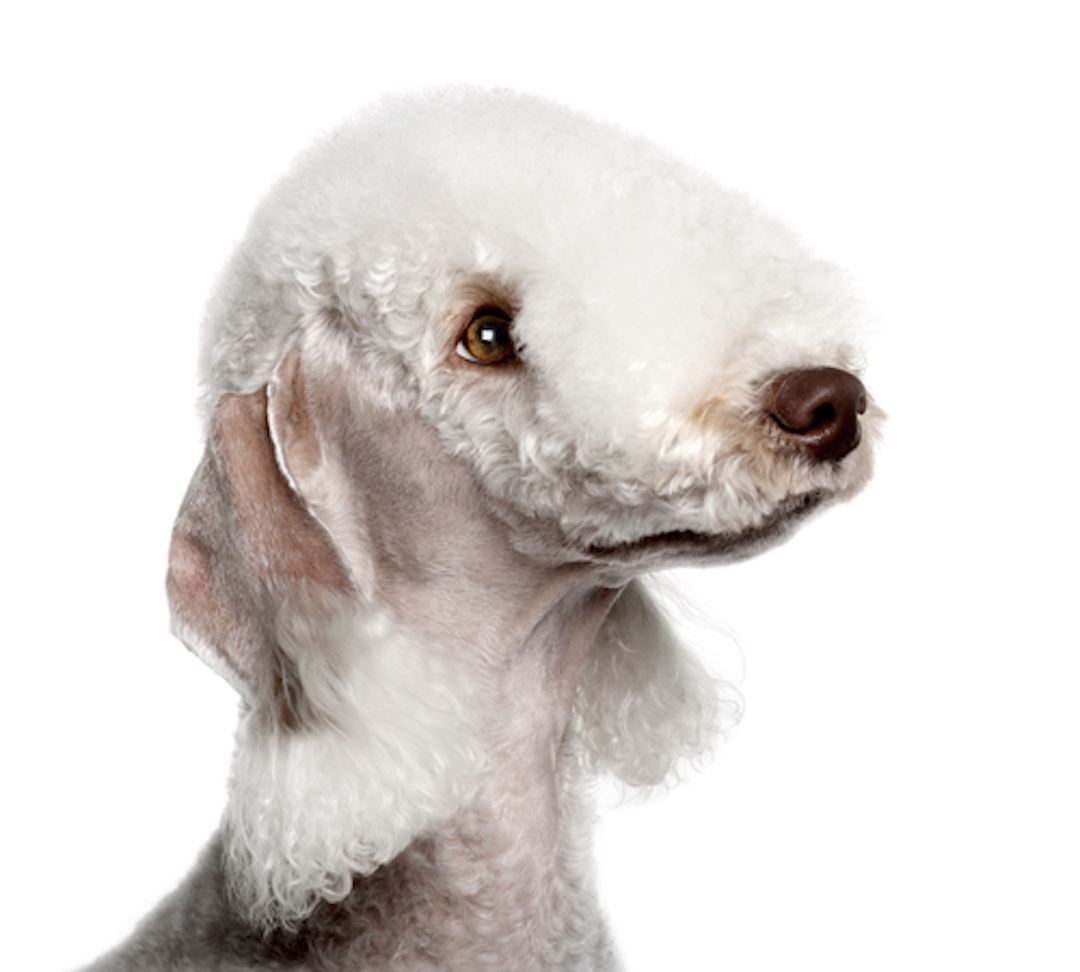
An average person on the street might not be able to identify the breed in this photo, but ask them what color the dog is, and they are likely to anwer, “white, of course.”
Technically speaking, they’d be wrong.
The majority of our readers who are dog people can tell you that the dog is a Bedlington Terrier, but even they might get the color wrong.
Inasmuch as the dog looks white, it may surprise some to learn that nowhere in the breed’s AKC standard section on color does the word, “white” appear. In fact, Bedlington Terriers come in three colors – blue, liver and sandy, and two marking patterns – solid, or with tan points. No white.
The devil is in the details, as they say, which in Bedlingtons means that the noticeable difference is in the color of their skin, nose, and eyes. Blue Bedlingtons will have a black nose, black eye rims, and very dark brown eyes. Their skin color is light grey. An additional surprise is that Bedlington Terriers are born rather dark colored. Blue Bedlingtons are born black, while liver and sandy Bedlingtons are born dark brown. A brown nose, brown eye pigment, and hazelish brown eyes will be found on liver and sandy colored dogs, and their skin is pinkish-brown.
No white.
That being said, many Bedlington Terriers will look white as teenagers, but by their “sophomore year,” they should be getting their “flying colors,” so to speak. En route to adulthood, a blue Bedlington may go through “50 shades of grey.” Liver and sandy terriers may be on either side of taupe or even a purply brown, what fashionistas would call “Ferra color.”
Whatever its color, an adult dog’s topknot must be lighter than the body , and this is important enough to be mentioned twice in the standard – and we love it!
Image: A two year old Bedlington Terrier by lifeonwhite/Depositphotos

Many Bedlingtons do have White patches on their fronts and/or on their chests.
These are less noticeable as their coat colour changes the same as Bi colours blend with maturity and would not be noticeable by the general public.